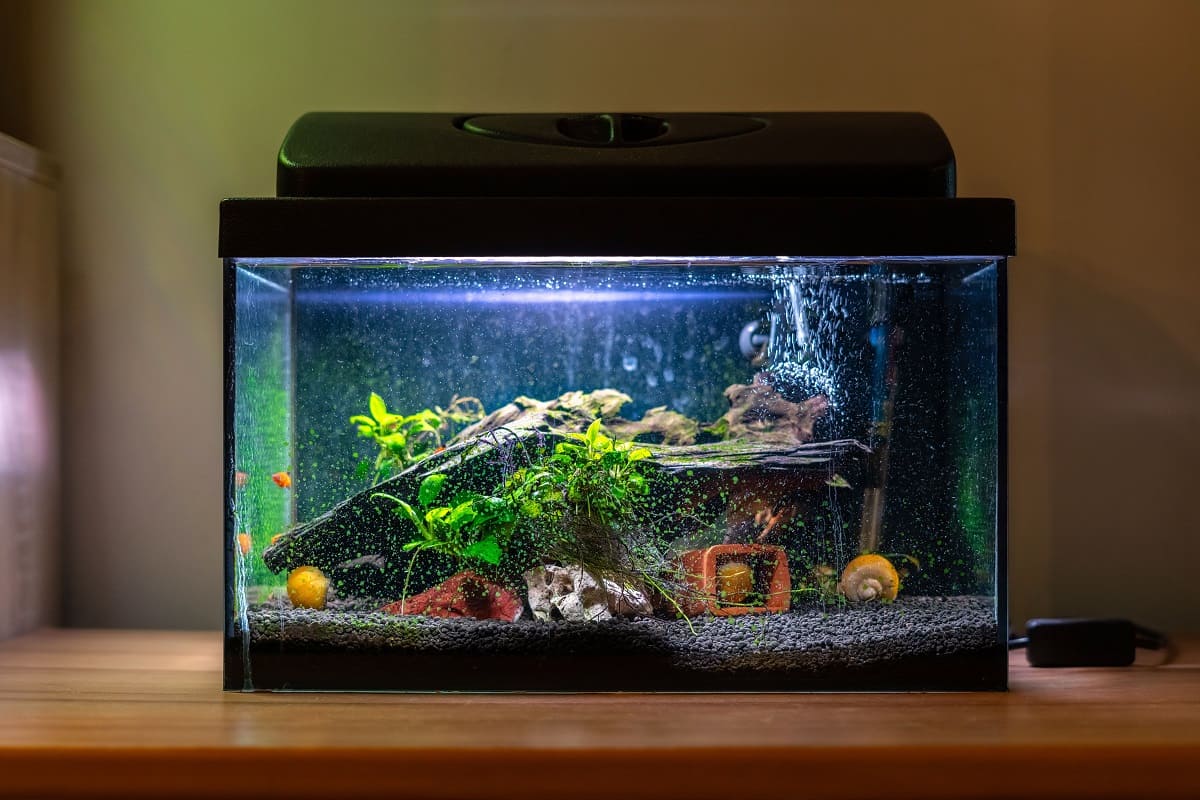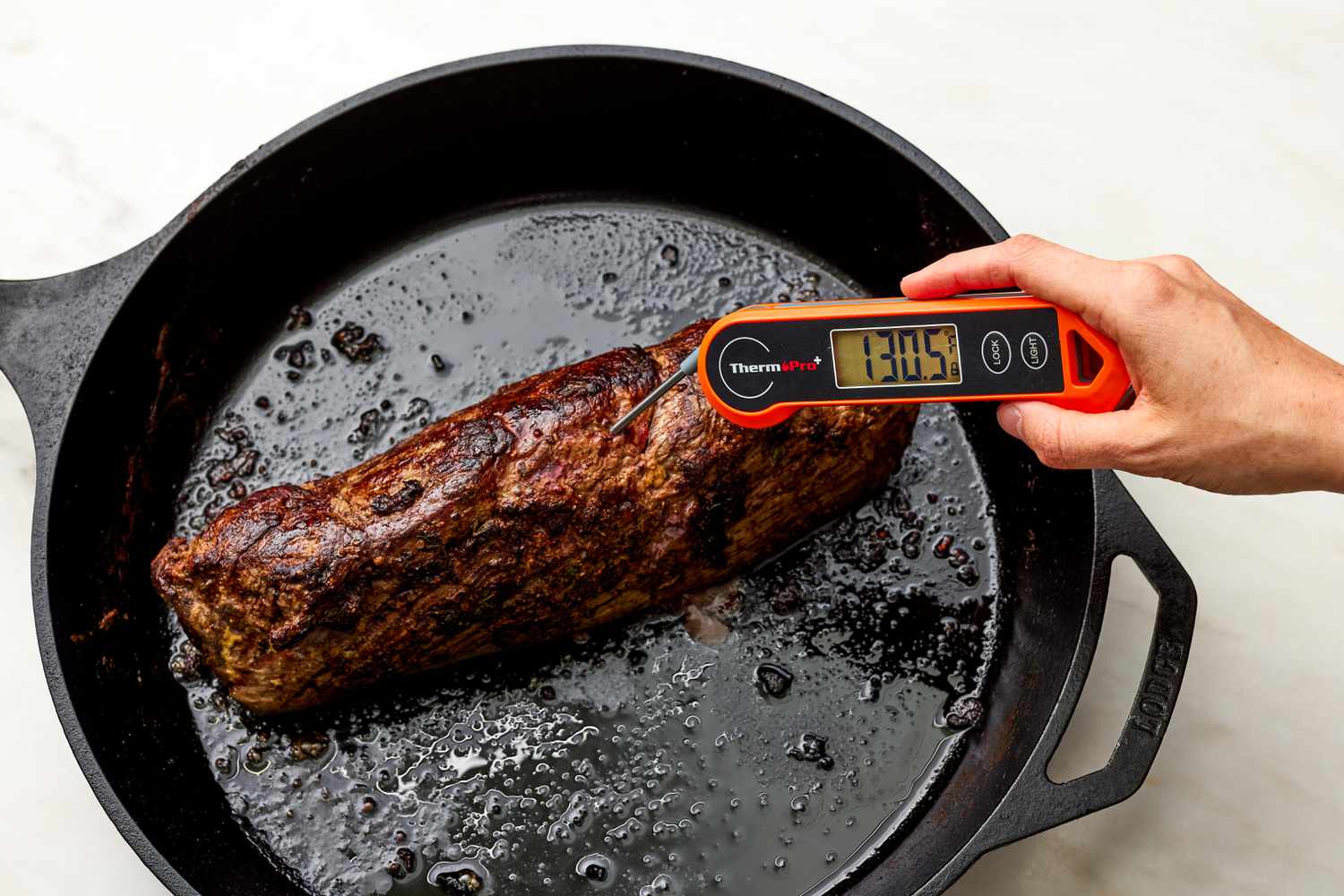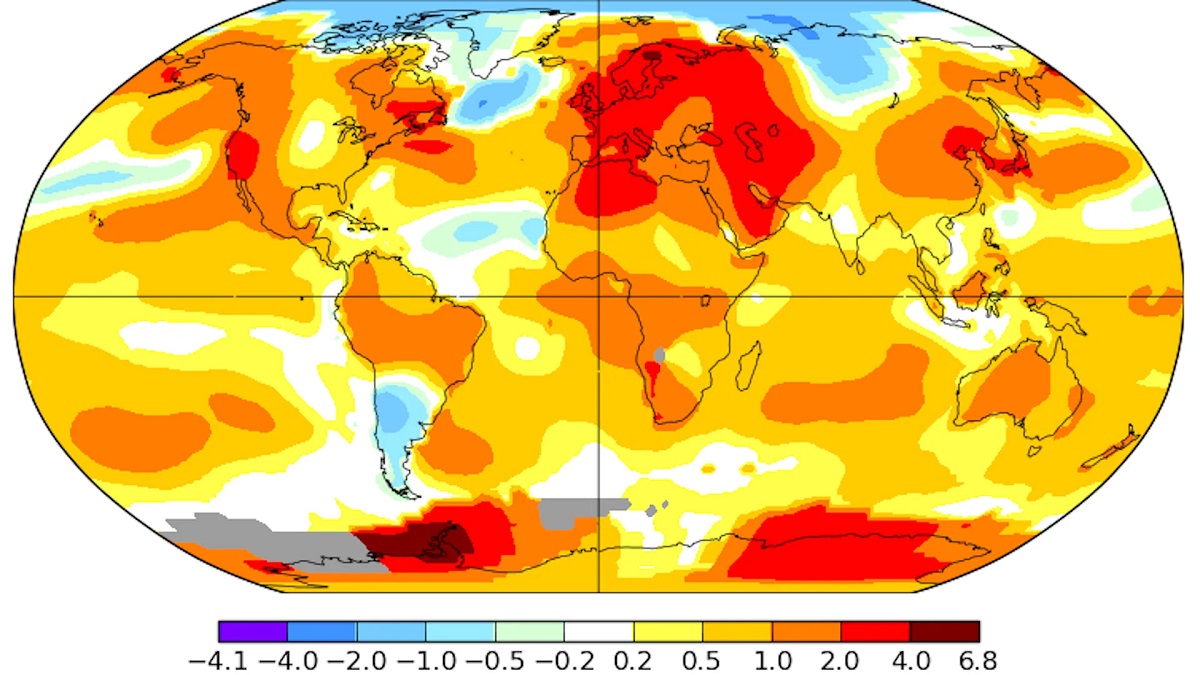Home>Health & Nutrition>Ideal Temperature For A Fish Tank


Health & Nutrition
Ideal Temperature For A Fish Tank
Published: February 19, 2024
Maintain the ideal temperature for your fish tank to promote the health and nutrition of your aquatic pets. Learn how to create the perfect environment for your fish.
(Many of the links in this article redirect to a specific reviewed product. Your purchase of these products through affiliate links helps to generate commission for Temperatures.com, at no extra cost. Learn more)
Table of Contents
Importance of Maintaining the Right Temperature
Maintaining the right temperature in a fish tank is crucial for the health and well-being of the aquatic inhabitants. Fish, being cold-blooded creatures, are highly sensitive to temperature fluctuations, making it essential to provide a stable and suitable environment for them to thrive. The ideal temperature ensures that the fish's metabolic processes, immune system, and overall physiological functions operate optimally, promoting their growth and longevity.
Temperature directly impacts the metabolic rate of fish. When the temperature is too low, the metabolic processes slow down, leading to reduced activity and sluggishness in fish. On the other hand, excessively high temperatures can accelerate metabolism to unsustainable levels, causing stress and potentially leading to organ failure. Therefore, maintaining the right temperature range is vital for ensuring that the fish's metabolic functions remain balanced and conducive to their well-being.
Furthermore, the immune system of fish is intricately linked to the water temperature. Fluctuations outside the optimal range can weaken the immune response, making fish more susceptible to diseases and infections. By maintaining the right temperature, fish owners can help bolster their aquatic pets' immune systems, reducing the likelihood of illnesses and promoting overall health.
In addition to metabolic and immune functions, the right temperature is essential for supporting the behavioral and reproductive patterns of fish. Many species exhibit specific behaviors and breeding activities that are closely tied to temperature cues. Deviations from the ideal temperature range can disrupt these natural behaviors, leading to stress and potential breeding difficulties.
Overall, maintaining the right temperature in a fish tank is not just about creating a comfortable environment; it is a fundamental aspect of responsible fishkeeping. By prioritizing temperature regulation, fish owners can provide their aquatic companions with the best possible conditions for growth, health, and natural behaviors, ultimately contributing to the overall well-being and longevity of their fish.
Read more: The Ideal Temperature Range For Dogs
Factors Affecting the Ideal Temperature
The ideal temperature within a fish tank is influenced by various factors that collectively contribute to the well-being of the aquatic inhabitants. Understanding these factors is crucial for maintaining a balanced and conducive environment for the fish. Here are the key elements that affect the ideal temperature in a fish tank:
-
Species-Specific Requirements: Different species of fish have distinct temperature preferences based on their natural habitats. Tropical fish, for instance, typically thrive in warmer waters, while cold-water species prefer cooler temperatures. It is essential for fish owners to research and understand the specific temperature requirements of the fish species they intend to keep. By catering to the individual needs of the fish, owners can ensure that the tank's temperature aligns with the natural preferences of the aquatic inhabitants.
-
Environmental Conditions: The ambient temperature surrounding the fish tank can impact the water temperature within. Factors such as room temperature, sunlight exposure, and proximity to heating or cooling sources can influence the overall temperature of the tank water. It is important to consider these external conditions when regulating the temperature to prevent drastic fluctuations that could stress the fish.
-
Heating and Cooling Equipment: The type and efficiency of heating and cooling equipment used in the fish tank play a significant role in maintaining the ideal temperature. Quality aquarium heaters and chillers are essential for regulating the water temperature within the specified range. Proper placement and regular maintenance of these devices are crucial for ensuring consistent and reliable temperature control.
-
Tank Size and Insulation: The size of the fish tank and its insulation properties can impact temperature stability. Larger tanks generally exhibit more stable temperature conditions compared to smaller ones, as they have a higher water volume that dissipates heat more evenly. Additionally, well-insulated tanks can help retain heat, reducing the impact of external temperature fluctuations.
-
Seasonal Variations: Changes in seasons can affect the temperature regulation within a fish tank. During colder months, room temperatures may drop, necessitating adjustments to the tank's heating system. Conversely, in warmer seasons, increased room temperatures may require the use of aquarium chillers to maintain the ideal water temperature.
By considering these factors and actively managing the temperature based on the specific needs of the fish species and environmental conditions, fish owners can create a stable and comfortable habitat that promotes the health and vitality of their aquatic companions.
Recommended Temperature Range for Different Types of Fish
Understanding the specific temperature requirements of different fish species is paramount for creating a suitable and thriving aquatic environment. Here are the recommended temperature ranges for various types of fish:
Tropical Fish
Tropical fish, originating from warm and equatorial regions, thrive in relatively higher water temperatures. The recommended temperature range for most tropical fish species falls between 75°F to 80°F (24°C to 27°C). This range encompasses popular tropical fish such as Tetras, Guppies, Angelfish, and Gouramis. Maintaining the higher end of this temperature spectrum is crucial for promoting the metabolic and immune functions of tropical fish, supporting their vibrant colors and active behaviors.
Cold-Water Fish
Cold-water fish species, including Goldfish and White Cloud Mountain Minnows, prefer cooler water temperatures compared to their tropical counterparts. The recommended temperature range for these species typically ranges from 60°F to 72°F (15°C to 22°C). It is important to note that while these fish can tolerate lower temperatures, drastic fluctuations should be avoided to prevent stress and health issues.
Read more: Ideal Fever Temperature For Children
Betta Fish
Betta fish, also known as Siamese Fighting Fish, thrive in slightly warmer water conditions. The recommended temperature range for Betta fish is between 76°F to 82°F (24°C to 28°C). Maintaining the upper range of this spectrum is beneficial for enhancing the vibrant colors and overall well-being of Betta fish, while also supporting their natural behaviors and breeding tendencies.
Cichlids
Cichlids, known for their diverse species and vibrant personalities, have varying temperature preferences based on their natural habitats. However, a general recommended temperature range for most Cichlid species falls between 75°F to 80°F (24°C to 27°C). This range provides a balanced environment for Cichlids, promoting their health, coloration, and social dynamics within the tank.
Marine Fish
Marine fish, including popular species such as Clownfish, Damsels, and Tangs, thrive in saltwater aquariums with specific temperature requirements. The recommended temperature range for marine fish typically ranges from 75°F to 82°F (24°C to 28°C), mirroring the stable and warm conditions of their natural ocean habitats.
Bottom-Dwelling Fish
Bottom-dwelling fish species, such as Corydoras and Plecos, often prefer slightly warmer temperatures to support their unique behaviors and metabolic functions. The recommended temperature range for these species falls between 72°F to 78°F (22°C to 26°C), providing an optimal environment for their well-being and activity levels.
By adhering to these recommended temperature ranges and tailoring the aquatic environment to the specific needs of each fish species, fish owners can create a harmonious and thriving habitat that supports the natural behaviors, health, and longevity of their aquatic companions.
Read more: Ideal Temperature Range For Guinea Pigs
Methods for Controlling and Monitoring Tank Temperature
Maintaining the ideal temperature within a fish tank requires a combination of effective control methods and diligent monitoring to ensure a stable and conducive environment for the aquatic inhabitants. Here are the key methods employed for controlling and monitoring tank temperature:
Quality Aquarium Heater and Chiller
Investing in a high-quality aquarium heater is essential for regulating the water temperature within the specified range, especially for tropical and warm-water fish species. These heaters are equipped with precise temperature controls and safety features, ensuring that the water remains consistently warm without overheating. Conversely, for tanks housing cold-water species or located in warmer environments, aquarium chillers offer the capability to lower the water temperature as needed, providing a comfortable habitat for the fish.
Thermostats and Temperature Controllers
Thermostats and temperature controllers are indispensable tools for maintaining precise temperature levels within the fish tank. These devices enable fish owners to set and monitor the desired temperature, automatically activating the heating or cooling systems to adjust the water temperature as external conditions fluctuate. By utilizing thermostats and controllers, fish owners can ensure that the tank's temperature remains within the optimal range, minimizing stress on the fish due to temperature variations.
Regular Water Testing
Conducting regular water tests using reliable aquarium thermometers is crucial for monitoring the temperature and identifying any fluctuations that may impact the fish. Digital thermometers provide accurate real-time readings, allowing fish owners to promptly address any deviations from the ideal temperature range. Additionally, integrating temperature monitoring as part of routine water testing helps maintain a proactive approach to temperature control, safeguarding the well-being of the fish.
Read more: Ideal Temperature For Dogs To Wear A Coat
Insulation and Tank Placement
Strategic tank placement and proper insulation contribute to temperature stability within the fish tank. Positioning the tank away from direct sunlight and drafty areas helps prevent rapid temperature changes. Additionally, insulating the tank with materials designed to retain heat, such as foam insulation, aids in maintaining consistent water temperatures, particularly in colder environments. By optimizing tank placement and insulation, fish owners can mitigate external temperature influences, promoting a more controlled and stable habitat for the fish.
Monitoring Seasonal Variations
Adapting to seasonal temperature fluctuations is essential for ensuring the long-term well-being of the fish. During colder months, adjusting the heating systems to compensate for lower room temperatures is crucial, while in warmer seasons, employing aquarium chillers to counteract rising room temperatures helps maintain the ideal water temperature. By proactively monitoring and adjusting for seasonal variations, fish owners can sustain a comfortable and supportive environment for their aquatic companions throughout the year.
By implementing these methods for controlling and monitoring tank temperature, fish owners can establish a reliable and well-regulated aquatic habitat that prioritizes the health, behavior, and overall vitality of the fish.
Consequences of Incorrect Temperature in a Fish Tank
Maintaining the correct temperature in a fish tank is not just a matter of comfort; it is a critical factor that directly impacts the health and well-being of the aquatic inhabitants. Deviations from the ideal temperature range can lead to a myriad of detrimental consequences, affecting the fish at physiological, behavioral, and immunological levels.
One of the most immediate and noticeable effects of incorrect temperature is the alteration of the fish's metabolic processes. When the water temperature strays from the optimal range, the metabolic rate of the fish becomes disrupted. In colder water, the metabolic functions slow down, leading to reduced activity and a weakened immune response. Conversely, in excessively warm water, the accelerated metabolism can place undue stress on the fish, potentially leading to organ failure and increased susceptibility to diseases. These metabolic imbalances can significantly impact the overall health and vitality of the fish, compromising their ability to thrive in the aquatic environment.
Furthermore, incorrect temperature levels can disrupt the natural behaviors and breeding patterns of fish. Many species exhibit specific behaviors and reproductive activities that are intricately linked to temperature cues. Deviations from the ideal temperature range can lead to stress-induced behaviors, decreased appetite, and inhibited breeding activities. For example, in colder water, fish may become lethargic and less inclined to engage in natural behaviors, while excessively warm water can induce heightened stress levels, affecting their social interactions and breeding dynamics. These disruptions not only impact the well-being of the fish but also hinder their ability to exhibit natural and healthy behaviors within the tank.
In addition to physiological and behavioral implications, incorrect temperature in a fish tank can compromise the immune system of the aquatic inhabitants. Fluctuations outside the optimal temperature range can weaken the fish's immune response, making them more susceptible to diseases and infections. Stress resulting from temperature variations can further exacerbate the fish's vulnerability to illnesses, leading to a higher incidence of health issues within the tank. Weakened immune systems can also impede the fish's ability to recover from injuries and infections, posing long-term health risks to the entire aquatic community.
Overall, the consequences of incorrect temperature in a fish tank extend beyond mere discomfort; they encompass a spectrum of physiological, behavioral, and immunological impacts that directly influence the health and well-being of the fish. By recognizing and addressing the potential consequences of temperature fluctuations, fish owners can prioritize the establishment of a stable and supportive environment that fosters the optimal health and natural behaviors of their aquatic companions.












